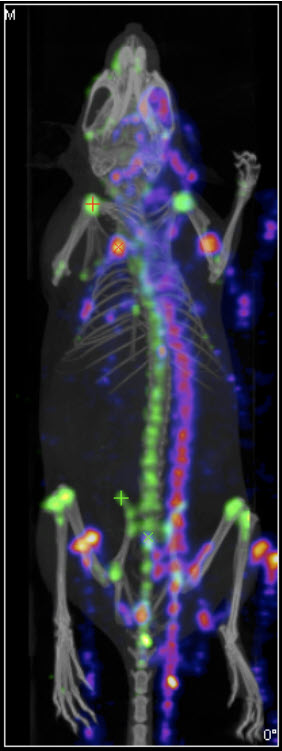The Distance/Annotation tool enables you to measure the distance between two points in any image. For example, it can be used to measure the size of a tumor by measuring its length, depth and width. One of the most powerful options available with the distance measure is the capability to perform landmark co-registration.
Getting There
The Distance/Annotation tool can be accessed via the tool pull-down menu on VivoQuant’s front panel.

Using the tool
Upon selecting the tool, theDistance/Annotation operator is displayed. The physical distance between two points can be measured by clicking on the Add New icon ![]() to add an object. To measure distance, left-click on two points of the image. A line is displayed between the two points to show what is being measured.
to add an object. To measure distance, left-click on two points of the image. A line is displayed between the two points to show what is being measured.
In the Distance/Annotation operator, each line is identified by a unique color tag. For each line, the 3D start and end points of the line are displayed as well as the length of the line (in mm). Multiple distances can be measured on the same image and are easily distinguished by their unique color. The results can be saved into an Excel file by clicking Save. The Profile function enables a graphic plot of the distance to be displayed for both the reference and the input data.
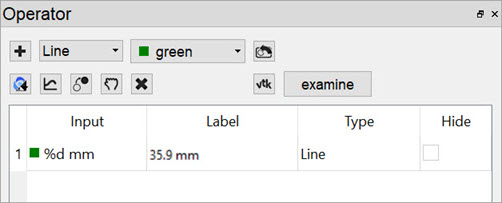
Goto with-in the object
Since a single left click sets a new point, you have to use a single middle mouse button click to go to the given position in the two respective other slices.
Removing Distance Measures
Right-click on any of the distance measures and click Remove to delete the distance measure completely.
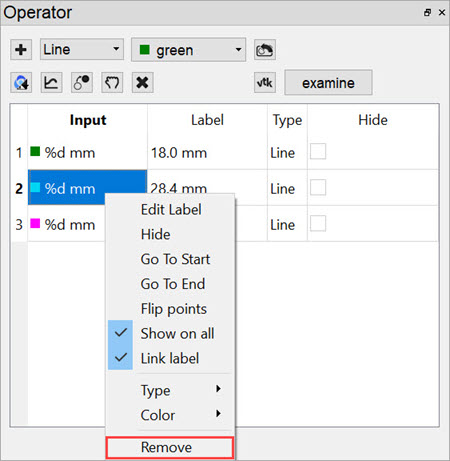
Profile
The Profile tool plots the values in each voxel through which the line passes. Values are displayed for both Reference and Input data sets and, given proper calibration, the plot values will be in Houndsfield units and MBq for CT and NM data sets, respectively. The File menu provides an option to save the Profile data as a PDF.
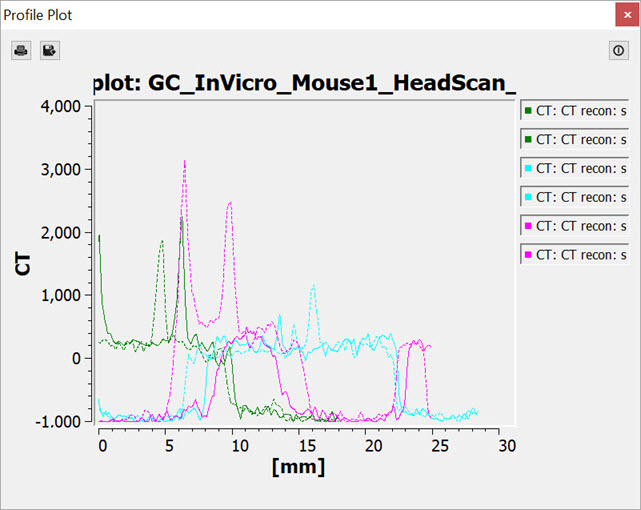
Landmark-based Co-Registration
One of the most powerful features of the Distance/Annotation tool is the built-in capability of performing landmark-based co-registration. With two data sets loaded, use the Distance/Annotation tool to draw at least one line that connects corresponding locations (i.e., locations which should be registered) between the reference and input data sets. The line should start on the reference image and be dragged to the input image. For example, if using a CT image as a reference and a SPECT image as input 1, left click on the CT, drag to the corresponding location in the SPECT image, and left click again to end the line. It may be useful to use the arrow line type to make clear the direction the input image will be reoriented. The user should perform landmark-based co-registration on one view at a time to optimize registration results.
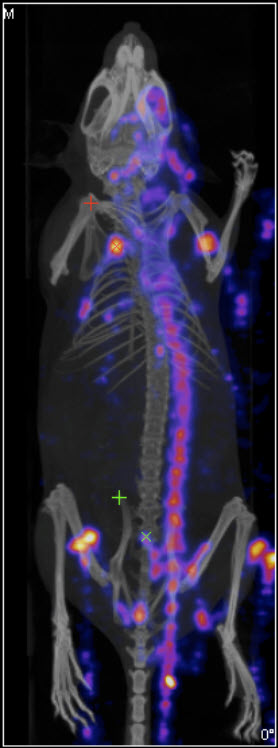
Click on the Landmark-based Co-registration icon ![]() to perform the registration. Once registration is complete, the shifted input data set will appear in the Main Window as
to perform the registration. Once registration is complete, the shifted input data set will appear in the Main Window as input 2.
